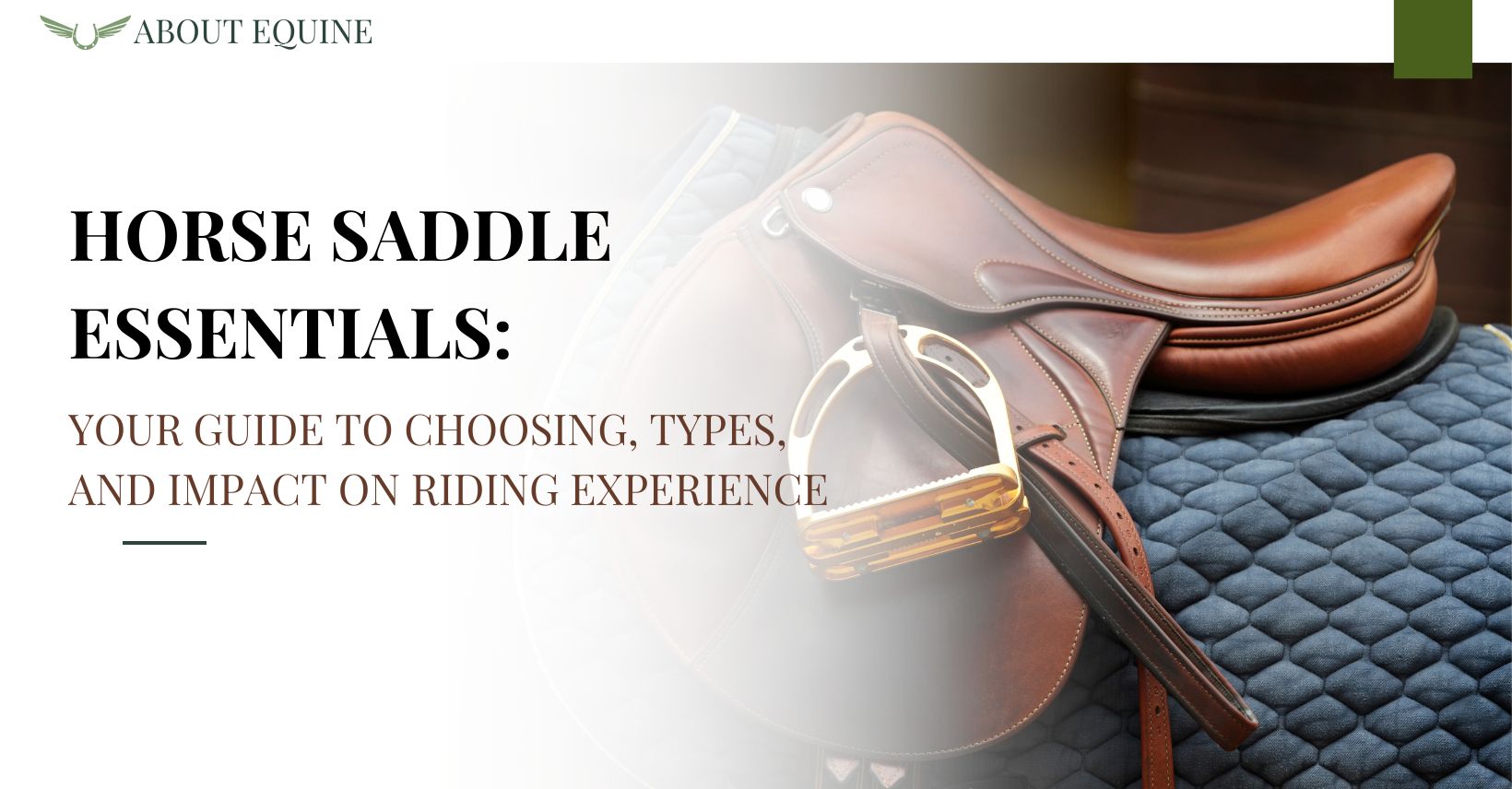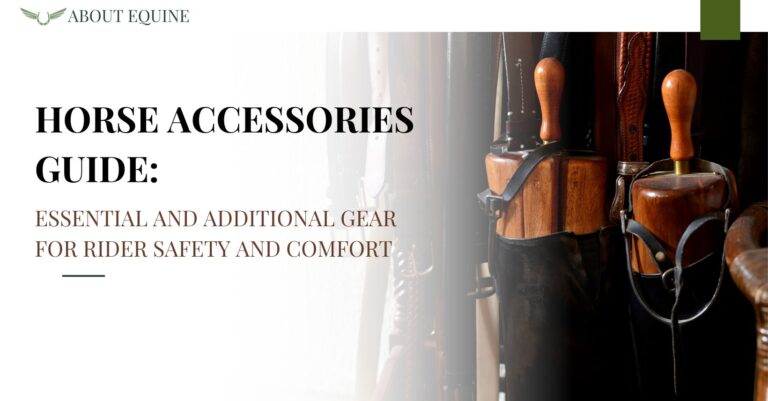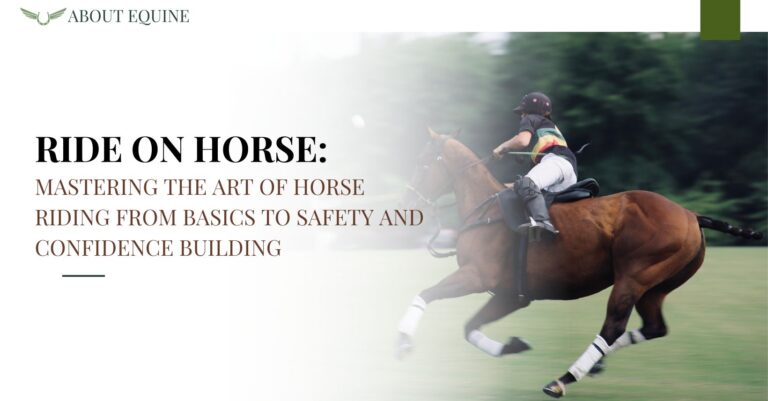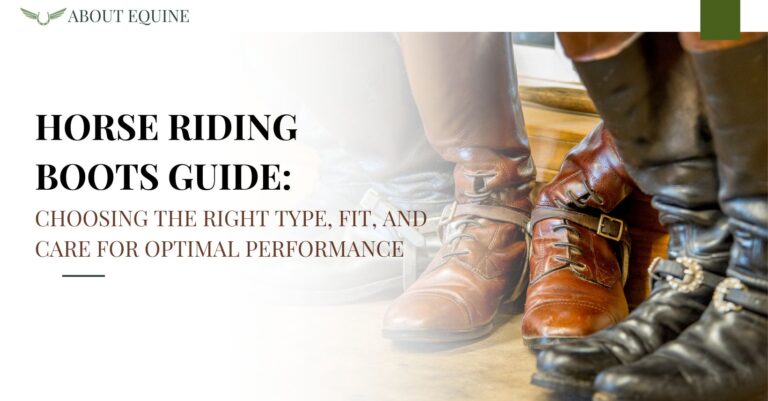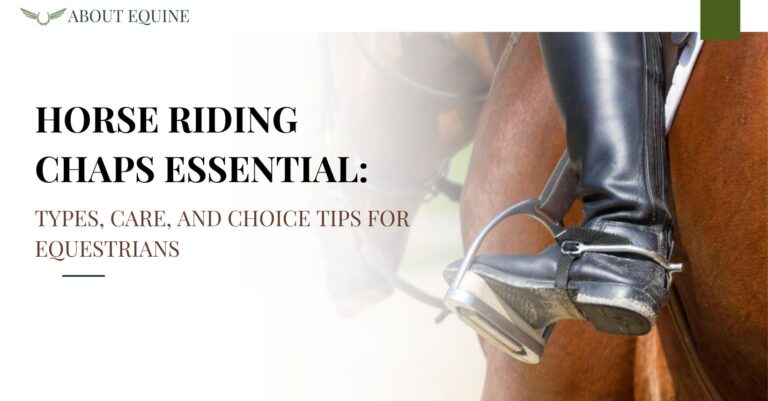Horse Saddle Essentials: Your Guide to Choosing, Types, and Impact on Riding Experience
Are you a horse enthusiast looking to enhance your riding experience?
Choosing the right horse saddle is important for both you and your horse.
Factors such as body type, riding style, and discipline are important in selecting the perfect saddle.
In this comprehensive article, we will explore the different types of saddle saddles, how your saddle choice can impact your riding experience, and potential health issues, and provide valuable tips for finding the ideal saddle.
By the end, you’ll be equipped with the knowledge you need to make an informed decision.
Get ready to ride with comfort, balance, and performance in mind!
What Is a Horse Saddle?
A horse saddle is a supportive structure placed on a horse’s back for the rider to sit on while horseback riding.
One of its key functions is evenly distributing the rider’s weight across the horse’s back, preventing discomfort or injury.
The saddle typically includes the tree, providing the frame, the seat for the rider, stirrups for the feet, and the billets and girth for securing it in place.
Saddle makers use leather, synthetic fabrics, and sometimes exotic skins to create various styles, such as Western, English, and endurance saddles.
A well-fitted saddle is vital for both the rider’s stability and the horse’s comfort, promoting a safer and more enjoyable ride. This leads us to understand why selecting the right saddle is so important…
Why Is Choosing the Right Saddle Important?
Selecting the right saddle is vital as it greatly influences the comfort and performance of both horse and rider during horseback riding. An ill-fitting saddle can result in various issues for both parties.
Discomfort can lead to soreness, chafing, and pressure sores for horses, hindering their movement and performance. Riders, too, may face pain, discomfort, and difficulty maintaining balance if the saddle doesn’t fit properly.
This affects the riding experience and poses safety risks. Balancing weight correctly, ensuring the saddle fits well, and prioritising comfort are key to a harmonious ride. As we move forward, we must consider what factors to evaluate when choosing a horse saddle.
What Factors to Consider When Choosing a Horse Saddle?
Several factors must be considered when choosing a horse saddle to ensure the perfect fit, comfort, and optimal performance for both the rider and the horse.
Horse’s Body Type and Conformation
The horse’s body type and conformation are vital in determining the appropriate saddle fit and ensuring optimal performance during riding.
The build of a horse, including the length and shape of its back, is important when selecting a saddle. A saddle frame, which is the frame of the saddle, needs to match the contours of the horse’s back to provide proper support and weight distribution. The gullet channel width is essential to prevent pressure on the horse’s spine. At the same time, the saddle bars should conform to the shape of the horse’s shoulders for comfortable movement. Different disciplines may require specific saddle designs to accommodate the unique muscle development of the horse.
Rider’s Body Type and Riding Style
The rider’s body type and preferred riding style are essential when choosing a saddle to ensure comfort, proper fit, and optimal performance.
Regarding saddle selection, the rider’s weight determines the appropriate seat size. A saddle that is too small can cause discomfort and restrict movement, while a saddle that is too large may lead to poor balance and stability. The rider’s height influences the seat size and positioning, ensuring proper alignment of the rider’s body for comfort and control.
The rider’s riding posture greatly affects the type of saddle required. A rider who prefers a more upright position may benefit from a saddle with added support and padding. In contrast, a forward-leaning rider may need a flat saddle to facilitate a proper riding position.
Matching the saddle type with the rider’s style, whether dressage, jumping, or trail riding, is essential. Each discipline requires specific features in a saddle to enhance performance and comfort, such as knee rolls for added stability in jumping or a deeper seat for security in dressage.
The role of stirrups must be considered when considering saddle selection. Properly adjusted stirrups not only aid in maintaining balance and stability, prevent fatigue and improve the overall riding experience. The combination of saddle, rider’s body type, preferred riding style, and appropriate stirrup length creates a harmonious connection essential for an enjoyable and successful riding experience.
Discipline and Riding Goals
The discipline in which the horse and rider participate and their specific riding goals greatly impact the saddle choice for optimal performance and comfort.
For example, in dressage, a discipline known for its precise movements and focus on the rider’s aids, a dressage saddle with a deep seat and long, straight flaps is preferred to help the rider maintain proper position and connection with the horse.
In contrast, jumping requires a saddle that allows riders to easily shorten their stirrups to secure a two-point position over fences. The forward flap and supportive blocks in a jumping saddle aid in maintaining balance and stability during take-offs and landings.
Material and Construction of the Saddle
The material and construction of a saddle, including the type of leather and the tree design, greatly affect its durability, comfort, and performance. High-quality materials create a saddle that lasts and feels good.
Treated leather offers both durability and a classic look, while synthetic materials provide a lighter, budget-friendly option. Variations in saddle tree designs impact the saddle’s flexibility and fit.
The construction techniques determine the weight and rigidity, influencing rider comfort and saddle longevity. Regular maintenance, such as cleaning and conditioning, is vital to keeping the saddle in top shape and ensuring its longevity. But what types of horse saddles exist, and how do these factors play into each variety?
What are the types of Horse Saddles?
Various horse saddles, including English and Western saddles, cater to different riding styles and preferences.
English Saddles
English saddles are renowned for their sleek design, close contact feel, and versatility in various equestrian disciplines such as dressage, jumping, and eventing.
These saddles stand out due to their lightweight structure, allowing easy handling and mobility during rides. The forward seat design common in English saddles promotes a correct riding posture, aiding in balance and control for the rider. Proper saddle fit is important in English riding, as an ill-fitted saddle can cause discomfort and hinder performance.
Saddle pads are vital in enhancing comfort and protecting the horse’s back. Quality gel saddle pads provide additional cushioning and shock absorption, ensuring both horse and rider can focus on their ride without distractions.
Western Saddles
Western saddles are known for their sturdy construction, deep seats, and prominent horns, making them ideal for trail riding, ranch work, and western pleasure riding.
These saddles are designed to provide the rider stability and security during long hours in the saddle, making them a popular choice among Western riders. The durability of Western saddles allows them to withstand the rigours of everyday use, ensuring they last for years with proper care. The deep seats of these saddles offer a comfortable and secure ride, especially when manoeuvring through rough terrain or performing intricate manoeuvres.
Endurance Saddles
Endurance saddles are designed for long-distance riding comfort. They are made of lightweight materials, ample padding, and secure stirrups, which are ideal for endurance and trail riders.
These saddles are specially crafted to comfort riders and horses during extended rides. They allow for better weight distribution and reduced strain on both parties. Additionally, the saddle’s lightweight design ensures that it does not add unnecessary bulk, making it easier for the horse to move freely and for the rider to maintain proper balance.
The comfort-enhancing padding in endurance saddles offers cushioning and support, reducing the risk of soreness and promoting a more pleasurable riding experience. The ergonomic construction of these saddles considers the long hours spent in the saddle, aiming to minimise fatigue and discomfort for the rider.
Australian Stock Saddles
Australian Stock Saddles boast a sturdy build, deep seats, and distinctive poles, making them ideal for cattle work, mustering, and extended hours of riding. They provide a secure seat for riders in demanding terrain, offering comfort and stability throughout long rides.
These saddles feature a traditional design refined over generations to meet the needs of stockmen and riders in challenging environments. Tack compatibility is essential when using Australian Stock Saddles, as proper Saddlery techniques ensure a correct fit, enhancing both rider comfort and horse performance. The right saddle choice can greatly impact your riding experience…
How Saddle Choice Affects Riding Experience?
The saddle choice plays a pivotal role in shaping the overall riding experience by influencing comfort, balance, and performance and mitigating potential health issues for the horse and the rider.
Comfort for Horse and Rider
Selecting the right saddle to enhance the riding experience and prevent discomfort or injury involves ensuring comfort for both the horse and the rider.
The saddle padding is important in cushioning the pressure points and distributing the weight evenly across the horse’s back. A well-designed saddle with proper ergonomics can help maintain a balanced position for the rider, reducing the strain on both the horse and the rider. The quality of materials used in the saddle construction impacts durability and overall comfort.
Balance and Stability
Proper weight distribution is key to achieving balance and stability during a riding experience, and the saddle plays a vital role in maintaining equilibrium for both the horse and the rider.
The design of the saddle directly impacts how the weight is distributed. An ergonomically designed seat shape can provide better support and comfort for the rider, enhancing their ability to stay centred.
Stirrup placement influences the rider’s balance by determining the position of the rider’s legs. When the stirrups are correctly adjusted, it helps the rider maintain a secure position and communicate effectively with the horse.
Proper saddle fit is essential as it ensures that the rider’s weight is evenly distributed across the horse’s back, preventing discomfort or potential injury. An ill-fitted saddle can cause pressure points, impacting the horse’s movement and performance.
Performance and Communication
Saddle choice directly influences performance and communication between the horse and rider, establishing a harmonious partnership and effective riding experience.
A well-fitted saddle ensures proper weight distribution, preventing discomfort or injury to the horse. The saddle’s design can impact the rider’s position, stability, and balance, ultimately affecting the clarity and precision of their cues. The material of the saddle plays a vital role in the durability, comfort, and overall longevity of the equipment, which directly correlates to the quality of the riding experience.
Potential Health Issues
A poorly fitting saddle can cause health issues for both horse and rider, including back pain, muscle strain, and discomfort, emphasising the importance of saddle fit and weight balance.
Improper saddle fit can create pressure points, restricting the horse’s movement and causing soreness and muscle injuries over time. Regular saddle fitting assessments ensure proper weight distribution and prevent long-term health problems.
Adjusting the saddle as needed can alleviate these issues and enhance the horse’s and rider’s comfort and performance. As you focus on these adjustments, consider the tips for choosing the right horse saddle.
Tips for Choosing the Right Horse Saddle
When choosing the right horse saddle, consider factors like fit, rider comfort, weight balance, and riding discipline. Professional fitting is key to ensuring the saddle fits both the horse and the rider perfectly, promoting better performance and reducing the risk of discomfort or injury.
Testing the saddle’s comfort and fit over longer rides is important. Feel free to explore different options to find the one that suits your riding style and body type. Regular assessments and adjustments by a skilled saddler help maintain the optimal fit as the horse’s shape or the rider’s preferences change. For a better riding experience, your saddle choice makes all the difference.
The Key to a Better Riding Experience: Your Saddle Choice
Your saddle choice is the cornerstone of a better riding experience. It influences comfort, performance, and the bond between you and your horse during every ride.
When you ride with a well-fitted saddle, you enhance your comfort and promote better performance from your trusted companion. The right saddle can alleviate pressure points, allowing you to communicate more effectively with subtle cues and movements, fostering a harmonious partnership.
Investing in a high-quality saddle tailored to you and your horse pays off in the long run. It ensures that both of you remain healthy and happy, making your riding endeavours a source of joy and fulfilment.

